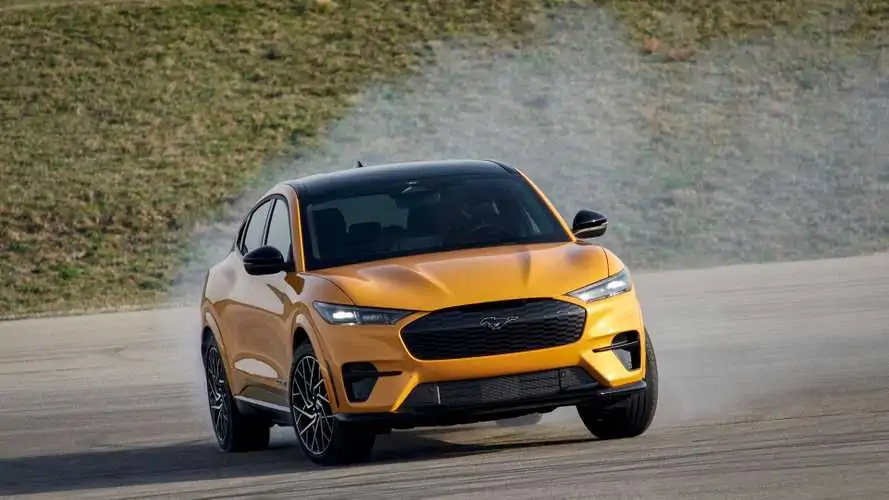The brakes are used to inducing sliding, and the throttle is modulated to maintain a drift.
Ford is developing a new drift mode system that will be used in future products, according to a U.S. Patent and Trade Mark application. According to Ford’s patent filing, this unique drift mode system will be available for both internal combustion engines and electric motors.
Ford has been using drift mode systems since the Ford Focus RS’s debut. Ford has filed a U.S. Patent & Trade Mark that explains how its next generation drift mode system works. “A controller is programmed in response to the vehicle in a drift state to decouple the driving wheels from the actuator, engage friction brakes to lock up the driven wheels, place the actuator in speed control, and command a torque to it based on a difference in measured speed and target speed.
The new drift mode system is available in internal combustion and electric engines. “A vehicle comprises an engine with a crankshaft, an electrical machine having a shaft and a front-end attachment drive (FEAD), having a tension member connecting the crankshaft to the shaft, and a drivetrain coupling the engine and driven wheels.”
According to the U.S. Patent and Trademark, the system will use the brakes to lock the wheels together to create a slide when the vehicle is in drift mode. Based on the sensor data, the system will increase power to maximize the slide. This is based upon the current wheel speed and the target wheel speed that has been optimized for drifting.
is found on all-wheel drive cars such as the Mercedes-AMG E63 and MK8 Golf R. These systems send more power to the rear, allowing owners to create slides much like a traditional rear wheel-drive car. The inclusion of friction brakes makes this a very different system, as evident by Ford’s patent.
